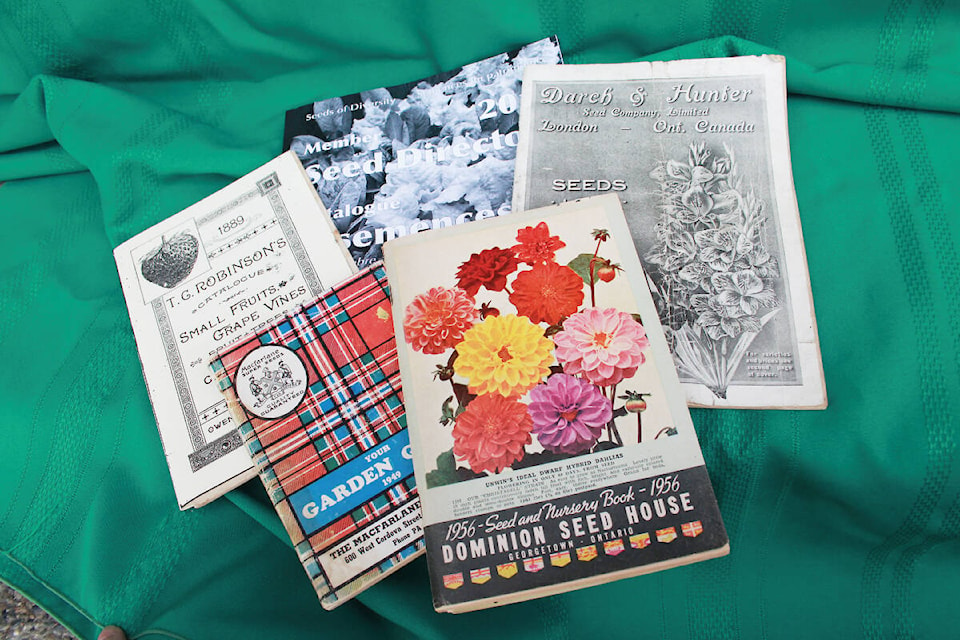By Mary Lowther
All the seeds from this year’s harvest have now been dried and stored in envelopes, ready for next year with each envelope labelled with the month and year saved. I will now consult the convenient sowing timetable from my West Coast Seeds catalog, which I have amended for my garden: marking some to be started in flats and others started outside. Experience has taught me that a little early organization produces better results.
David said this supports the historians who claim that agriculture created bureaucracy. When encouraged to explain he cited sources from James Burke, Columella and the book of Genesis. I should probably add footnotes here but space is limited, so those interested should just ask him themselves. Plan on at least half an hour for the short explanation, although he has a tendency to digress. It would be wise to pack a lunch, and wiser still to just take his word for it.
My paperwork, however, is incomplete. I have gathered seeds and made a planting schedule, but other than garlic I haven’t recorded when other crops have been harvested. Up to now I have just harvested them when they looked ready and followed various authors’ suggestions for ensuing crops. Next year I will do better: I’ll write my own observations, because no two plots are alike, noting when I start and finish the harvest of each crop.
For the present, however, I have put my packets of seeds into containers labeled with the dates to be sown, so when I see in the agenda book that I need to do this I will pull out the container and put the contents to use. In keeping with the season, I will make a list (and check it twice) of all the seeds I have so I’ll see what’s missing that I need to buy. David has been after me to grow mushrooms so I think I’ll persuade him to get me a book about them for Christmas. I’ll have to pick it out and order it to make sure it’s one I want, but I’m not going to wrap it too.
I check each seed packet for recommended days to start harvesting and write that in my agenda book, planning on subsequently noting when harvest actually begins and ends because varieties produce differently in different gardens. I also record the dates to fertilize and spray compost tea on each crop, and any special treatment they should get, as recommended by master gardener Jerry Baker in his book Terrific Tomatoes, Sensational Spuds, and Mouth-Watering Melons.
When the catalogues come out I’ll order what’s on my “needs and wants and whatever we can afford” list after perusing the gorgeous pictures. When the seeds arrive I’ll put them into the dated containers so I don’t have to remember when to sow them. Finally, I’ll write on each packet the last year they’re expected to be viable. Marc Rogers’ book Growing and Saving Seeds is invaluable for this because he lists popular vegetable seeds’ viability length. Still, given the cost of seeds, and just in case the seeds are still good after the suggested date, I’ll give them the sprouting test on a damp tissue and sow any that sprout. When I have a lot of stale dated seeds, I strew them across a bed as a cover crop at the end of summer when rain will often get them going. I have two beds sown with extra carrot, garlic, turnips, parsley, radish and kale seeds and plan to dig them in next spring.
The historian may be right about agriculture leading to bureaucracy, but there are significant differences as well. While there are similarities between budget speeches and equine end product only the latter is of any use to a serious gardener.
Please contact mary_lowther@yahoo.ca with questions and suggestions since I need all the help I can get.
